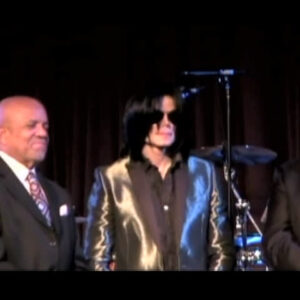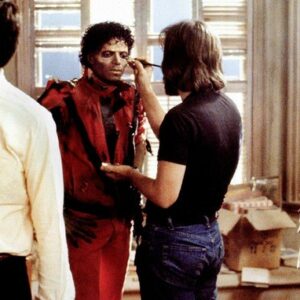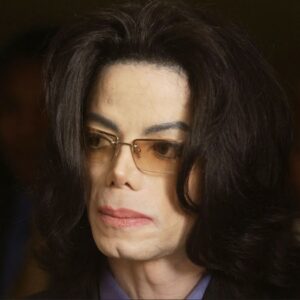When Queen Latifah first stepped onto the scene in the late 1980s, she was an unmissable force in the world of hip-hop, a genre then heavily dominated by men. Her debut album, All Hail the Queen (1989), was a bold statement of empowerment, blending sharp, socially conscious rhymes with a fierce commitment to addressing racial and gender issues. But Queen Latifah, born Dana Owens, was never one to be boxed into a single lane. Over the years, she not only evolved as an artist but transformed the soundscape of her music by incorporating live instrumentation, culminating in a career that has spanned multiple genres—most notably jazz and R&B.
In a trajectory that few could have predicted, Queen Latifah’s musical evolution is a masterclass in creative versatility. From the gritty beats of early rap to the lush, orchestral arrangements of her later work, she has shown that reinvention isn’t just a survival tactic—it’s an art form.
Early Influences: Shaping a Unique Musical Voice
Before Queen Latifah was a global icon, she was a young girl from Newark, New Jersey, steeped in the sounds of her neighborhood. The city’s cultural tapestry was rich with jazz, soul, gospel, and, of course, hip-hop. Latifah’s upbringing introduced her to a broad spectrum of music, but it was the soulful storytelling of gospel and the defiant rhythms of jazz that would later shape her more mature work. As she grew into her artistry, these early influences lingered, like embers waiting to ignite a new musical direction.
Her initial venture into music aligned with the rise of hip-hop in the ’80s. Hip-hop was brash, rebellious, and carved a space for Latifah to assert her voice. However, even during her early years as a rapper, Queen Latifah demonstrated a musicality that hinted at her future evolution. Her 1993 album, Black Reign, with hits like “U.N.I.T.Y.,” showcased not only her lyrical prowess but her ability to layer different sounds in a way that stood out from her peers. Her vocal delivery, even when spitting rhymes, had a soulful cadence that suggested she had more in her toolkit than just rap.
The Shift: Embracing Live Instruments
The leap from rap to jazz and R&B wasn’t a sudden pivot, but a gradual, thoughtful transition. By the early 2000s, Queen Latifah had already made a name for herself not just in music but also as a multifaceted entertainer in film and television. It was during this time that she began to embrace a more organic sound, one that reflected her own personal growth and a desire to create music that resonated on a deeper emotional level.
The incorporation of live instruments marked a pivotal shift in her musical journey. It’s easy to imagine Queen Latifah, always a visionary, feeling constrained by the synthesized beats that dominated hip-hop. Live instrumentation gave her music an authenticity, a richness that spoke to her jazz and soul influences. The turning point came with her 2004 album, The Dana Owens Album, a project that was a departure from her hip-hop roots, leaning fully into jazz and R&B.
The album was a revelation, filled with covers of classic jazz and blues standards. Tracks like “I Put a Spell on You” and “Simply Beautiful” were brought to life by lush arrangements, including saxophones, pianos, and strings. The use of live instruments was not just a stylistic choice but a statement—Latifah was embracing her full musical potential, unbound by genre.
Her decision to work with live musicians was rooted in a desire to produce a more “timeless” sound. Synthesized beats, while iconic in hip-hop, often feel dated over time. Live instruments, on the other hand, carry a kind of permanence. Latifah has spoken about how incorporating live music allowed her to connect with audiences in a more visceral way, creating performances that were rich, soulful, and, most importantly, real.
Collaborations with Musicians: Crafting a New Sound
Queen Latifah’s transition from rap to jazz and R&B was not a solo endeavor. Her collaborations with a host of talented musicians and producers were key to shaping her new sound. For The Dana Owens Album, she enlisted an impressive roster of jazz and blues instrumentalists, ensuring that the production was authentic and that every note, every chord, carried the weight of experience.
Latifah worked closely with musicians like pianist Rob Mounsey and guitarist Paul Jackson Jr., whose contributions brought a level of sophistication to her music. In an industry where hip-hop artists were often paired with electronic producers, Latifah’s choice to collaborate with live instrumentalists set her apart. The creative process of fusing live instruments with modern production techniques was no easy feat, but Queen Latifah approached it with the same level of intensity and passion that she brought to her early rap career.
In interviews, Latifah has spoken about how her collaborations with musicians helped her better understand the nuances of jazz and soul. Working with instrumentalists allowed her to experiment with different arrangements, tempos, and keys, all while staying true to her voice. She learned the art of restraint—how to let the music breathe, how to give each instrument its space to shine. This was a marked departure from her rap work, where the beat often dominated the track.
The Impact on Music Production: Depth and Richness
The introduction of live instruments into Queen Latifah’s music didn’t just change the way her songs sounded—it added an entirely new dimension to her artistry. Her jazz and R&B projects are marked by a depth and richness that wasn’t as prominent in her earlier work. The live instrumentation gave her music a warm, full-bodied quality that set her apart from many of her contemporaries.
Where hip-hop production often relies on sampling and electronic beats, live instrumentation offers more room for improvisation, emotion, and texture. Queen Latifah’s music gained layers that weren’t possible in her early rap records. Tracks like “Moody’s Mood for Love” from The Dana Owens Album are filled with dynamic shifts, complex harmonies, and moments of instrumental brilliance that transport the listener into a different world.
Her use of live instruments also allowed her to explore more diverse genres. While her early work was confined to the world of hip-hop, the incorporation of live music opened the door to jazz, blues, and even gospel influences. Latifah became a musical chameleon, able to transition seamlessly between styles while still maintaining her unique voice.
Live Performances: A True Showwoman
Queen Latifah’s evolution didn’t stop in the studio. On stage, she brought the same dedication to live instrumentation, often performing with full bands, complete with horns, strings, and backup singers. Her live performances became events—immersive experiences where the audience could feel every note, every beat, reverberating through the room.
One of her most memorable performances came during her 2004 tour in support of The Dana Owens Album. Latifah performed at the Montreux Jazz Festival, a prestigious event known for attracting the best musicians in the world. Her set was a masterclass in blending live instrumentation with the energy of a hip-hop show. She seamlessly transitioned from jazz standards to soulful ballads, with a band that responded to her every movement. The show was a testament to her versatility as a performer, showcasing how live music could elevate her artistry to new heights.
Cultural Significance: A New Chapter for Hip-Hop and Beyond
Queen Latifah’s incorporation of live instruments has had a lasting impact on both her career and the broader music industry. In a genre like hip-hop, which was born out of sampling and electronic production, her embrace of organic sounds represented a bold departure. It also signaled a new chapter for the genre, one where hip-hop artists were free to explore different musical traditions without losing their credibility.
Her work in jazz and R&B has further solidified her place as one of the most versatile artists in music history. Queen Latifah’s willingness to evolve, to push the boundaries of what is expected of a hip-hop artist, has made her a pioneer in the truest sense of the word. She has shown that it’s possible to respect the roots of a genre while still moving it forward, blending the old with the new to create something entirely her own.
Beyond her musical contributions, Queen Latifah’s use of live instruments has contributed to a broader cultural conversation about authenticity in music. In an era where auto-tune and synthesized beats dominate the airwaves, Latifah’s commitment to live music feels like a breath of fresh air. She reminds us that there is something powerful about hearing a saxophone solo, about the raw energy of a live performance, about music that is made by humans, not machines.
Queen Latifah’s journey from hip-hop to jazz is not just a story of personal growth—it’s a testament to the power of musical evolution. By embracing live instruments, she has created a body of work that is rich, textured, and timeless, and in doing so, she has set a new standard for artists everywhere.





